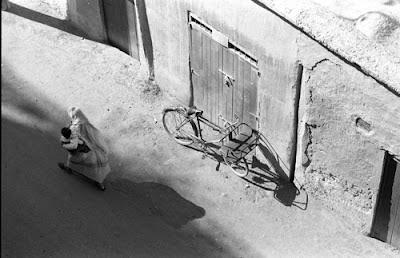 |
Policemen,
Pera Hera Festival, Kandy, Sri Lanka.
Photo
taken with Nikon 35mm/f1.8 DX standard lens.
© Graham Dew 2010
|
In 2010 we went on holiday to Sri Lanka, and one of the highlights of the trip was the Pera-Hera festival in Kandy. This is a spectacular parade of musicians, dancers & painted & bejewelled elephants. Held at night, I knew I would need to use a flash to illuminate the procession, as I did not expect any substantial spotlighting to be in place. I wanted to use fill-flash, relying on the small amount of light from burning torches and decorative electric lighting to provide the ambient lighting. The only sensible option seemed was to use a large aperture lens which would allow me to make the most of the limited amount of lighting available from my flash and from background lighting. And so I treated myself (any spending on photo gear is a rare treat) to a new Nikkor 35mm/f1.8 DX lens. This lens is the DX sensor equivalent to the standard 50mm lens in 35mm film terms.
 |
|
Torch Bearer,
Pera Hera Festival, Kandy, Sri Lanka.
Photo
taken with Nikon 35mm/f1.8 DX standard lens.
© Graham Dew 2010
|
It was interesting to see how people used the 50mm focal length. It is difficult to do exact comparisons between the eye and camera lens, but the view through a 50mm lens corresponds closely with that of the eye – with practice you could keep both eyes open with one eye to the viewfinder and one eye to the surrounding environment.
This ‘normality’ of field of view divides opinions about the standard lens. For many people the normal, undistorted, unstretched, uncompressed view gave a transparency to the lens that suited their subject; people, things, the near distance. Well suited to capturing people in their surroundings, it was the lens of choice for environmental portraiture, and for documentary workers too. Cartier–Bresson claimed to use this lens all the time, and it is clear from looking at the work of many of the greats of photography that the standard lens was used to make the majority of world’s most famous images.
For almost two decades I took all my photos on a Nikon FM2, with a small collection of lenses – a 28, 85 and 50mm lens. All of these lenses are encompassed by my modern 14-42mm Lumix. In those film days, I reckon about 80% of my pictures were taken on the 50, 15% on the 28 and the remaining 5% on the 85mm. However, if my usage is anything to go by, the modern zoom spends most of its time at either end of the focal range, and very little time in the middle. I guess that I am looking for extremes of viewpoint, and that the natural look of 50mm easily gets overlooked. However, the standard lens does offer an extreme in use – that of wide aperture, and in consequence, shallow depth of field.
 |
|
Rogue Oats, Barton Farm, Winchester.
Photo
taken with Nikon 35mm/f1.8 DX standard lens.
© Graham Dew 2010
|
Depth of field is a key intrinsic characteristic of photographs. Although painters and illustrators can mimic soft-focus, it is not inherent to their process. In lens based photography there is an element of focus depth in every image made. Used carefully, shallow depth of field can guide the viewer around the picture, change the balance of importance of the picture, and simplify the background to suggest rather than describe.
Whilst shallow depth of field can be a very
appealing tool, its biggest drawback is the accuracy of focus needed to
get the correct elements sharp. In the old film based days I would
rarely use my 50mm at f1.4 (or my 85mm at f2 for that matter) because
focussing had to be so precise that inevitably my camera or the subject
moved before the shutter was released and the picture taken. Any subject
not directly in the centre of the image could not be focussed really
accurately – focus and recompose would inevitably give errors for close
object. These days auto-focus has moved on tremendously, and modern
mirrorless cameras allow accurate focussing anywhere in the image.
Moreover, face recognition AF is a technology that really works, quickly
and accurately focussing on eyes whilst you can concentrate on
composition. Nowadays wide aperture lenses can be used fully open with
confidence.
 |
|
Seaweed, Sennen Beach, Cornwall
Photo
taken with Panasonic Lumix 20mm/f1.7 standard lens.
© Graham Dew 2012
|
When I changed my camera system from Nikon DSLR to micro
four thirds, along with the Lumix G3 and kit zoom I bought the 20mm f1.7 Lumix prime lens.
Equivalent to a 40mm lens in 35mm film terms, this has all the benefits of the
standard lens with a slightly wider field of view, which suits me even better
than a ‘50’. It is a great lens for photographing things, a lens to use for stuff that is near, and can separate out
the subject from the clutter. The camera feels very small, almost pocketable and very well balanced with this diminutive lens, making it a joy to use. I get the feeling that it may even become my normal lens.

No comments:
Post a Comment